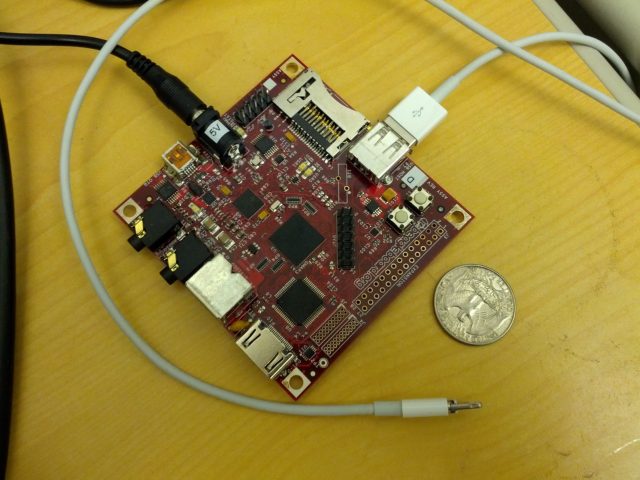Trusting iPhones plugged into bogus chargers get a dose of malware
iPhones will pretty much trust any computer they're plugged into.

The Mactans charger uses a BeagleBoard for its computational power.
Billy Lau, Yeongjin Jang, and Chengyu Song
Their bogus chargers—which do, incidentally, charge the phone—contain small computers instead of mere transformers. The iPhone treats these computers just as it does any other computer, but instead of just charging, it responds to USB commands. It turns out that the iPhone is very trusting of USB-attached computers; as long as the iPhone is unlocked (if only for a split second) while attached to a USB host, then the host has considerable control over the iPhone.
The researchers used their USB host to install an app package onto any iPhone that gets plugged in. iOS guards against installation of arbitrary applications with a strict sandboxing system, a feature that has led to the widespread practice of jailbreaking. This attack doesn't need to jailbreak, however.
Instead, it takes advantage of the system that Apple devised to permit developers to deploy applications to their own devices for testing purposes. Deploying such applications requires the creation of a provisioning profile. A provisioning profile identifies a specific phone and a specific application, allowing the named application to run on the named device. These provisioning profiles are generated by Apple and installed over USB.
The malicious charger interrogates the attached iPhone to read its UDID, the unique ID number that identifies a particular iPhone. It then sends the UDID to Apple's Web page that generates provisioning profiles. With the provisioning profile in hand, it can deploy the provisioning profile to the phone, and then deploy the malicious app identified by the provisioning profile.
Though the malicious app is still sandboxed, it doesn't have to pass through Apple's normal application vetting process, and so it can still do plenty of useful malicious things. The demonstration showed a malicious Facebook app that replaced the real Facebook app with a trojaned version. The trojaned version could then do things like take screenshots of the iPhone whenever passwords are being entered, and simulate key presses to, for example, dial numbers without user intervention.
There are limits to this kind of attack. As well as requiring the phone's screen to be unlocked, the generation of the provisioning profile requires the attacker to have a valid developer account. Each developer account can only generate provisioning profiles for 100 different phones, and there's no facility to remove a UDID that's associated with a developer's account.
This will tend to limit the attacks to specific ones against individual users, rather than widespread, indiscriminate attacking. In principle, a Mactans charger could be made to look identical to an official Apple charger; a suitably motivated attacker could replace proper chargers with the malicious chargers to attack targets' phones.
Apple has responded to this research by making the iPhone a little less trusting. Instead of trusting any USB host that's connected to, iOS 7 will prompt users the first time, asking if they want to trust the currently connected computer. This notification will immediately disclose that a charger isn't a charger at all, but in fact a Mactans-like device.

iOS 7 devices are a little bit more suspicious than their iOS 6 brethren.



No comments:
Post a Comment